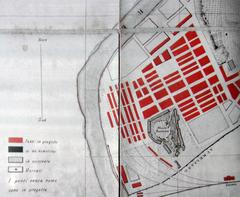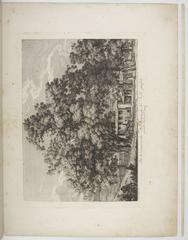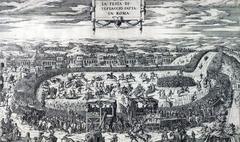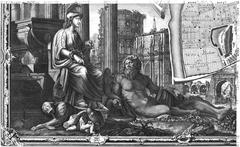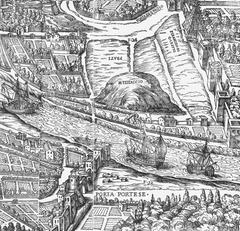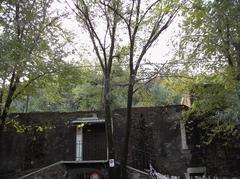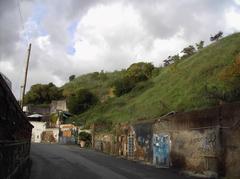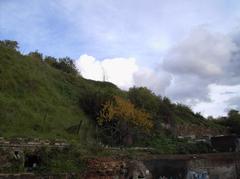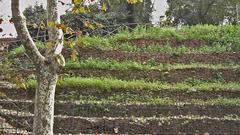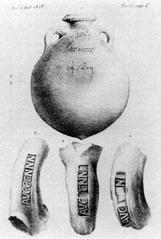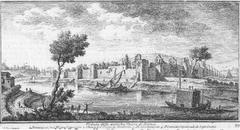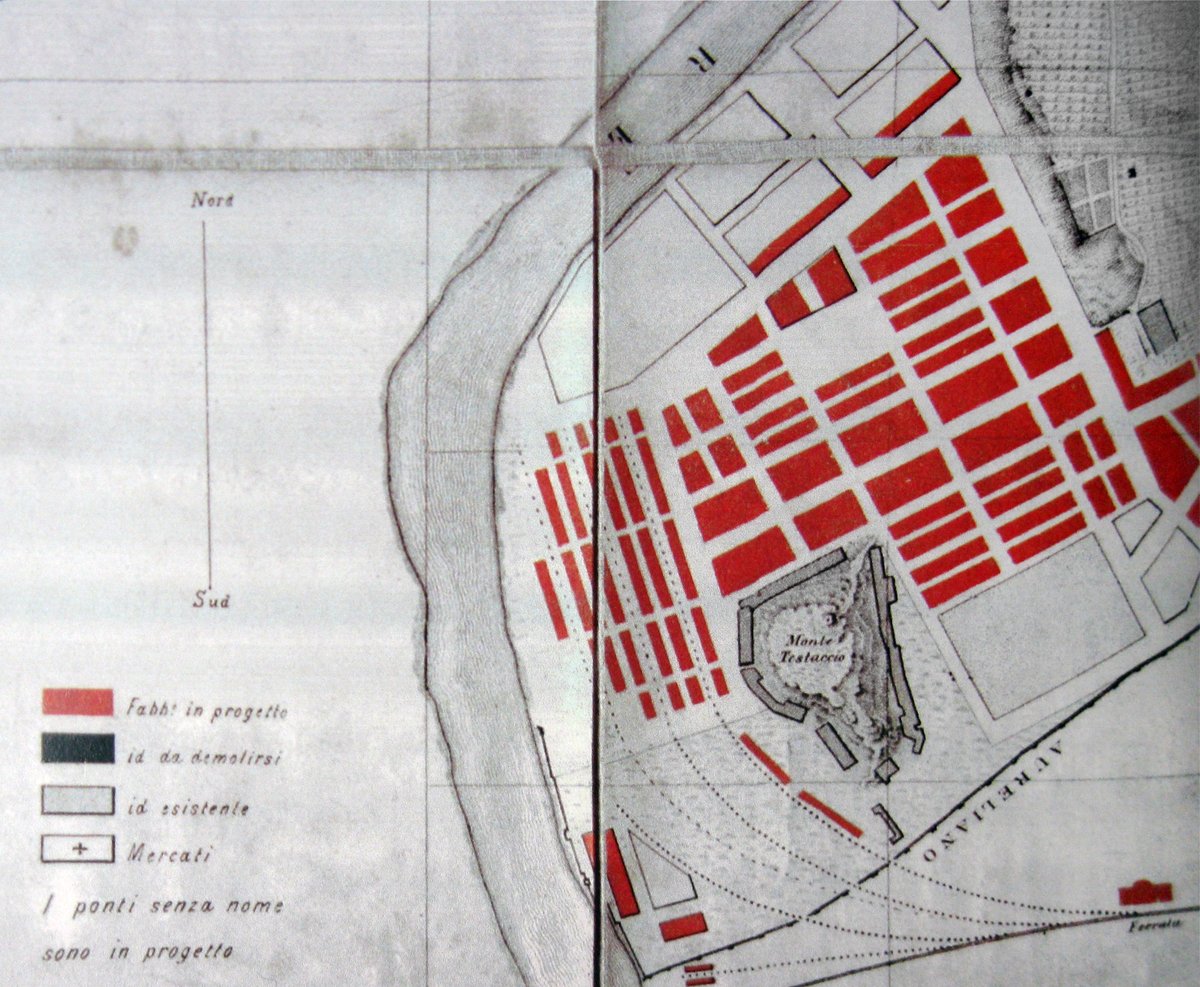
Monte Testaccio: Visiting Hours, Tickets, and History — A Complete Guide to Rome’s Historical Site
Date: 14/06/2025
Introduction to Monte Testaccio: History and Cultural Significance
Nestled in Rome’s dynamic Testaccio district, Monte Testaccio—also called Monte dei Cocci, or “Mount of Shards”—is a unique archaeological marvel. Unlike other Roman monuments, Monte Testaccio is an artificial hill composed almost entirely of millions of broken Roman amphorae, mainly olive oil containers, systematically discarded between the 1st and 3rd centuries CE. This singular site provides a tangible look into ancient Rome’s vast trade networks, particularly with provinces like Baetica (modern Spain) and North Africa, and illustrates the Romans’ advanced systems for waste management and urban planning.
The mound itself is a testament to careful logistical organization; amphorae shards were stacked in terraces, stabilized with lime layers to neutralize odors and prevent disease. Today, Monte Testaccio bridges ancient and modern Rome, surrounded by a district celebrated for its authentic Roman spirit, culinary heritage, and vibrant culture. Access to the hill is restricted to guided tours, reflecting ongoing conservation efforts.
This guide offers everything you need to know about Monte Testaccio: its rich history, archaeological importance, practical visiting information (hours, tickets, accessibility, travel tips), and recommendations for nearby attractions. Whether you’re a history enthusiast, archaeology lover, or a traveler seeking a unique Roman experience, Monte Testaccio is an essential stop in the Eternal City (An American in Rome; Civilisable; Tour in Rome).
Table of Contents
- Historical Background
- Nearby Attractions
- Visuals and Media
- FAQ
- Conclusion and Recommendations
- External Sources
Historical Background
Origins and Construction of Monte Testaccio
Monte Testaccio formed between the 1st and 3rd centuries CE as a vast deposit for broken amphorae, primarily those used to transport olive oil. These amphorae arrived via the Tiber River from provinces such as Baetica and North Africa. Due to oil saturation, amphorae could not be reused, so they were systematically broken and arranged outside the city walls, eventually forming the mound visible today. The process was highly organized—amphorae were stacked in terraces, supporting walls were built from nearly intact vessels, and lime was strategically layered to neutralize odors (An American in Rome; Civilisable).
Scale and Archaeological Significance
Monte Testaccio covers about 20,000–22,000 square meters, with a circumference of nearly 1 kilometer and a height of 35–54 meters. It contains the remains of an estimated 25–53 million amphorae. Archaeologists have uncovered amphorae bearing stamps and inscriptions, providing crucial data about ancient trade routes, merchants, and administrative practices (Travellerspoint).
Economic and Social Context
The hill reflects the economic prowess of ancient Rome, highlighting the scale of olive oil importation and the logistics managed by nearby warehouses like the Horrea Galbae. Disposal of amphorae was a necessity for public health and urban hygiene, showing the sophistication of Roman waste management (Civilisable).
Later History and Cultural Transformations
After the Roman era, Monte Testaccio was largely forgotten but later repurposed for Christian rituals, local festivals, and even military use during the 19th century. Its base was excavated to create cool wine cellars and stables, many of which now house restaurants and nightclubs, contributing to Testaccio’s renowned nightlife (An American in Rome). Archaeological research began in earnest in the 19th century, with systematic cataloging of amphorae inscriptions. Today, access to the site is limited to guided tours in order to ensure preservation.
Visiting Monte Testaccio
Location and Directions
Monte Testaccio is in the Testaccio district, south of the Aventine Hill and close to the Tiber River. It can be reached by:
- Metro: Piramide station (Line B), then a 5-minute walk.
- Bus: Multiple lines serve the area.
- On foot: About 20–30 minutes’ walk from central Rome.
Opening Hours and Tickets
- Hours: Guided tours typically run between 9:00 AM and 6:00 PM. The site is closed on Mondays and major holidays. Hours may vary by season and operator, so always check in advance.
- Tickets: There is no general admission; access is only via guided tours. Prices range from €12–€15 for adults (some operators may charge more for specialized tours). Discounts are available for youths and seniors. Book well in advance, especially in peak months like June (Tour in Rome).
Guided Tours and Special Events
Guided tours last 60–90 minutes and include walks around and sometimes onto the hill, with in-depth explanations of its construction, trade history, and archaeological discoveries. English-language tours are available, especially in high season. Photography is allowed in most areas—ask your guide for specifics. Occasionally, special events and cultural festivals are held nearby.
Accessibility
Due to uneven terrain and archaeological constraints, Monte Testaccio is not fully accessible for wheelchair users or those with limited mobility. Contact your tour operator about possible accommodations.
Travel Tips
- Wear sturdy, comfortable shoes.
- Bring water and sun protection in summer.
- Book tours in advance.
- Use public transportation for easier access.
- Combine your visit with nearby attractions for a fuller experience.
Nearby Attractions in Testaccio
- Mercato di Testaccio: A modern covered market known for its local food and produce (Civilisable).
- Pyramid of Cestius: An ancient pyramid tomb adjacent to Monte Testaccio and the Aurelian Walls.
- Non-Catholic (Protestant) Cemetery: The resting place of John Keats, Percy Bysshe Shelley, and other notable figures—open daily from 9:00 AM to 5:00 PM, admission ~€3.
- Ex-Mattatoio: Rome’s former slaughterhouse, now a cultural center hosting art exhibitions and events.
- Street Art: Testaccio is renowned for its vibrant murals and contemporary artworks.
Visuals and Media
Enhance your experience with high-quality images and virtual tours featuring:
- Amphora shards and terraces.
- Panoramic views from the summit.
- The lively Testaccio market.
- Street art and nightlife venues.
- Use descriptive alt text like “Monte Testaccio amphora shards” and “View of Monte Testaccio hill in Rome” for SEO optimization.
Frequently Asked Questions (FAQ)
What are Monte Testaccio’s visiting hours?
Guided tours typically run from 9:00 AM to 6:00 PM, Tuesday through Sunday. Check with your tour provider for the current schedule.
Is there an entrance fee?
No general admission; tickets are included in guided tour packages. Prices usually range from €12–€15.
Can I visit Monte Testaccio without a guide?
No, public access is strictly via guided tours to protect the site.
Is Monte Testaccio suitable for children?
Yes, tours are family-friendly and guides often tailor content for younger visitors.
Is the site wheelchair accessible?
Not fully; the uneven terrain makes access difficult for those with limited mobility.
Are guided tours available in English?
Yes, especially in peak tourist season. Confirm language with your tour provider.
Are photography and videography allowed?
Generally yes, but some areas may have restrictions—ask your guide.
Conclusion
Monte Testaccio is a remarkable testament to ancient Rome’s commercial power and urban ingenuity. Its millions of amphorae fragments offer a vivid narrative of the empire’s olive oil trade and Roman daily life. Visiting today, you’ll gain insight not only into ancient logistics but also into the living, evolving neighborhood of Testaccio, famed for its food, culture, and nightlife.
To make the most of your visit:
- Book a guided tour in advance.
- Pair your experience with a stroll through Mercato di Testaccio or a meal at a local trattoria, some of which are built into the ancient hill itself.
- Download the Audiala app for up-to-date information, local tips, and exclusive guided itineraries.
- Explore our related posts and follow us on social media for the latest updates and travel ideas.
References and External Links for Further Reading
- An American in Rome
- Civilisable
- Tour in Rome
- Wanted in Rome
- Rome Actually
- Travellerspoint
- myadventuresacrosstheworld.com
- rome.info
- roma-pass.com
- neverendingvoyage.com
- romeonfoot.com
- turismoroma.it
- Official Rome Tourism Website
- Testaccio Market Guide - GetYourGuide
